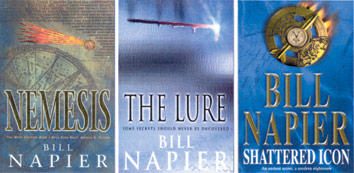| 2003 |

|
YEAR BOOK |
Armagh Observatory. Armagh
|
A novel approach to the Public Understanding of Science
|

More than that, science is economically important: it is hard to imagine any economy thriving in the 21st century without an adequate supply of engineers. technologists and scientists, as well as the research base to stay ahead of the game. Indeed, a steady supply of science graduates is now seen as a prerequisite for economic success. But science, like art, involves people with vision and technique, and those with the ability to present their work in ways the public can understand.
Many people are intrigued by phenomena such as black holes, exploding stars and eclipses; some are inspired by the prospect of expeditions to Mars, or by questions such as the origin of Life, even the Universe. However, most move on with their lives, leaving science behind and the popular science base perilously thin.
One way to reach new audiences, having a rich heritage and strong links to the lrish literary tradition, is to explore science under the guise of fiction. Not science fiction, but 'novel' science. Such a work can take the dilemmas and issues of modern science and explore the resulting questions through the give-and-take of fictional characters, living as it were in a parallel world.
Thus, Aldous Huxley, H.G. Wells and Arthur C. Clarke influenced the way their generations perceived science. Michael Crichton and Margaret Atwood are arguably doing the same for ours. A novel can reach millions of people, many of whom might otherwise have no contact with modern science.
The first author has recently explored a wide range of astronomical issues using this device: the possible use of an asteroid as a weapon of war (Nemesis) , the 'detection dilemma' of contact with ET (The Lure); and the application of calendars as a propaganda weapon in a long-simmering religious conflict (Shattered Icon).
Novels like these, and the block-buster movies they sometimes seed, can often be enjoyed by millions of people world-wide. It seems likely that they will affect the public perception of science for years to come.
Contact: Bill Napier, Armagh Observatory; E-mail: [email protected]